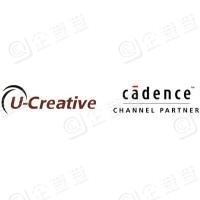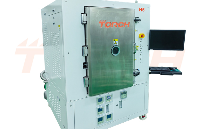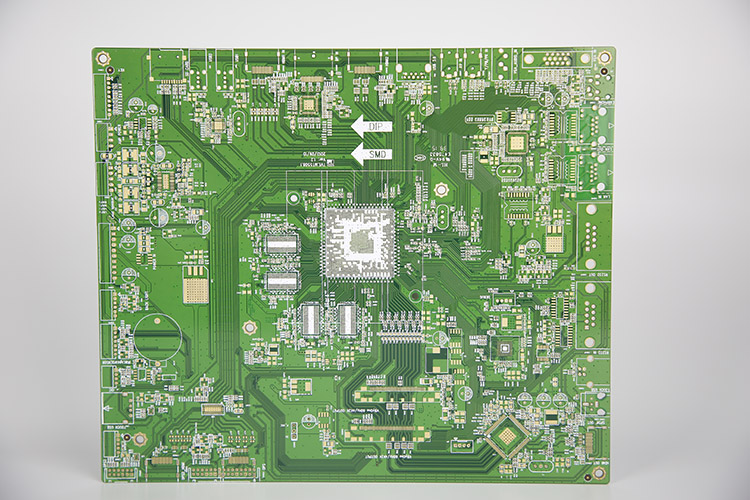光印電路板制作過程,pcb making
關鍵字:光印電路板制作過程
本文來自下面的連接:http://www.turbokeu.com/myprojects/pcb.htm
本文為國外朋友寫的光印電路板的制作過程,這種板子10年前就有了,想想當年拜托別人將電路板文件打印到膠片時別人都不答應,收費也貴,主要是當時激光打印機太貴了,那時候光印電路板價格也貴,現在不知道價格是多少了,因為好久都沒有用了,現在主要采用熱轉印,當然,光印也有自己的優點,就是制作方便,而且做出來的效果也相當不錯,就是成本偏貴,有些偏遠地方有可能買不到光印電路板。況且如果只制作一次,那么膠片就只用一次,這樣我是覺得有點浪費膠片。
制作過程相當簡單,將電路板圖打印到膠片上,可以先不管正反面,(嚴格意義上做的話要講究正反面,因為如果正反面不對的話,在做很細線條的時候效果不好。),在暴光時候別將正反面錯了,因為如果正反面弄錯了就相當麻煩了。暴光時間大概是8分鐘左右就可以了,一般的光印電路板上都有說明要求。顯影的時候注意溶液濃度,千萬別過度顯影了。
本文介紹的腐蝕方法是三氯化鐵,我覺得這個容易因為比較黑,不容易看清楚,最好還是使用雙氧水與鹽酸配置,但是要注意濃鹽酸有揮發性,要注意通風。
In answer to the frequently asked question about how I make my Printed Circuit Boards (PCB’s)
I make almost professionally looking PCB’s since years, the only thing I can’t do by myself is the silkscreen mask.
The basic PCB material I use is presensibilized with a UV sensible lacquer (available in most electronic stores).
You can also use non presensibilized PCB material and treat it with Positiv20 spray from Kontakt Chemie. De-oxidate and de-grease the raw PCB material with steel wool and aceton. Atomise a FINE layer of Positiv20 onto the copper and let the PCB dry for 24 hours in ambient room temperature, or about an hour at a maximum of 70°C (do not exceed! ). I do this inmy hot air electric oven in the kitchen.
The drying MUST be done in complete darkness! After that the PCB can be used as normal presensibilized PCB.
All you need is:
-
A software to develop your PCB layouts. I use the demo version of Circad’98 from Holophase because of its ease of use.
I also recently bought the cheap Sprint-Layout software from Abacom.
-
(Preferably) A laserprinter to print the darkest possible printouts of your PCB layout on transparent slides.
Ialways print out two identical and mirrored slides,so that the tonerside of the upper slide will be in direct contact with the UV-sensible lacquer side of the PCB material(against parasitic UV light between slide and lacquer), and staple themvery precisely together.
-
A UV-exposure unit to expose the PCB material to (short wave) UV light.
The optimal wave length should be between 370 and 440 nm, withmy Sylvania 350 blacklights that output their peak wave length at 356 nm, it works just fine. Beware these are no blacklights as we know from dancingclubs or case modding, the lamp is just white coated as any other TL lamp when it’s powered off. Powered on it emits a clear blue-ish light (very bad for your eyes!).
This is my DIY UV-exposure unit, equipped with 4x 20W TL tubes (the unit isalmost 20 years old now!).
In the meanwhile the timer on the picture has been replaced by my DIY microcontroller based timer.
The same results can be obtained with two tubes of 8 or 15W, only exposure timings will be longer.
Also, do not forget to preheat the lamps during 10 minutes to obtain their maximum light output.
To determine the "best" exposure time for the UV exposure I did the following:
- Take a slide with a PCB layout.
- Put a piece of cardboard on 9/10 of the surface.
- Expose for 1 minute.
- Move the cardboard to 8/10 of the surface.
- Expose for 1 more minute.
- Move the cardboard to 7/10 of the surface.
- Expose for 1 more minute. And so on...
- Develop the exposed PCB.
- Examine the results and decide for the best exposure time.
In my case the best exposure time is between 5 and 6 minutes, so I decided for 5min 30secs. I didn’t fail any PCB since then...
- A "tupperware " container to develop the exposed PCB.
After exposure the PCB has to be developed in a solution of sodiumhydroxide (NaOH + water).
Sodiumhydroxide under the form of pellets or flakes is also called caustic soda.
Pre-packaged bags of sodiumhydroxide to dilute in 1 liter of warm tapwater are available at most electronic stores. (I tried with caustic soda and water but it didn’t work out very well...I’ve found that either all or none of the lacquer dissolves)
Pour it into a "tupperware" container big enough to hold the PCB so that the developer is shallow.
You can see the PCB developing (the developer goes blue as soon as the exposed lacquer is dissolving) and the drawing of the layout will become clearly visible on the copper.
Rinse the PCB under flowing tapwater. The development should be finished within a minute (typically about 30 seconds at 20-25°C) After more than a few minutes the non exposed areas of the lacquer will begin to dissolve too.
The developer in the tupperware should be used only ONCE! (use fresh developer for every new PCB to develop)
-
A "tupperware" container to etch the PCB.
Etching of the PCB in a Ferric Chloride acid solution (Fe2CL3 + Water), available at electronics stores under the form of yellow-brownish grains to dilute in 1 liter of warm water, again in a "tupperware" container disposed in a "bain marie" (hot water recipient).
I use my kitchen sink filled with some hot water to obtain a temperature of about 50°C.
Ferric Chloride acid is more effective when its temperature rises, and therefore etching times decrease. Continuously moving the tupperware so that the etchant is flowing over the PCB also decreases drastically etching time. (with a fresh Ferric Chloride solution the etching time can go as low as 8-10 minutes).
- A metalsaw and a minidrill.
After the etching process the PCB has to be cut, filed and sandpapered to the right dimensions.
Drilling of the PCB holes (OMG, I hate this...), beginning with a 0.8mm drill (suitable for resistors, little capacitors, transistors, IC’s, to 1.0, 1.2 & 1.3mm for bigger components.
I use a 12 to 18V - 100W Maxicraft mini drill and the accompanying drill standard (very easy) powered by my PWM speed controller for mini drills project.
Some finished PCB’s:
Since the copper is still covered by the UV lacquer it’s protected against oxidation and moisture, and also the lacquer acts as a (not very good) solder flux when soldering the components to the PCB.
I prefer to remove the lacquer with aceton (ask your wife or girlfriend...), solder the components, and then treat the solder side with a spray varnish (I use transparent Plastic Spray 70 from Kontakt Chemie and green varnish from KF).
A few weeks ago I bought also a new TBM220 mini bench drill machine from Proxxonfor about 250 Euro.
Not cheap but very precise:
發布評論請先 登錄
【PCB】四層電路板的PCB設計
高效節能,多層PCB電路板拼板設計全攻略!
電路板 Layout 的 PCB 過孔設計規則

電路板 Layout 的混合信號 PCB 設計指南

PCB電路板元器件種類繁多,如何快速識別?

HDI板盲孔制作常見缺陷及解決
探索PCB儲能板:解開能量存儲在電路板上的密碼
PCB電路板的阻抗工藝中控制要點
PCB電路板設計與制作的步驟和要點
探究PCB基板特性對電路板穩定性的影響!






 光印電路板制作過程,pcb making
光印電路板制作過程,pcb making












評論